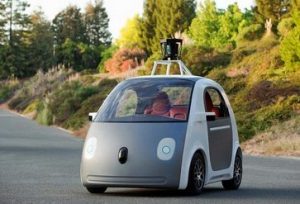 When I was writing “Hands off the Steering Wheel,” the feedback I received from colleagues in clean transportation was a mixed bag. Lack of interest, not seeing how it relates to clean transportation, and ominous dread were the types of responses I received, for the most part. There were a few people, including readers who’ve posted comments in Green Auto Market and on LinkedIn, who see the connectivity between the goals of clean transportation and autonomous vehicles. For me, it’s all about the role ground transportation will be playing in the next 25 years as technology advances rapidly, traffic congestion grows, and for meeting aggressive mandates in greenhouse gas emissions.
When I was writing “Hands off the Steering Wheel,” the feedback I received from colleagues in clean transportation was a mixed bag. Lack of interest, not seeing how it relates to clean transportation, and ominous dread were the types of responses I received, for the most part. There were a few people, including readers who’ve posted comments in Green Auto Market and on LinkedIn, who see the connectivity between the goals of clean transportation and autonomous vehicles. For me, it’s all about the role ground transportation will be playing in the next 25 years as technology advances rapidly, traffic congestion grows, and for meeting aggressive mandates in greenhouse gas emissions.
A Christian Science Monitor analysis piece took on some of these questions in “Driverless Cars: Good for the Planet?” Both sides of the argument are presented – with points made about autonomous vehicles encouraging additional driving for passengers who get to do other things besides drive; public transportation could lose support if people get used to driverless cars to fulfill their intentions formerly met by bus and train rides. On the flip side, the environmental gains that are likely to come from autonomous vehicles include more efficient driving removing all of the constant accelerating and braking that drivers shouldn’t be doing.
Vehicle-to-vehicle (V2V) technologies will play an important role in autonomous transportation as vehicles communicate with each other. A car approaching an intersection will be able to intelligently coordinate with other cars – avoiding collisions and less time and fuel wasted stuck in traffic or missing the traffic green light. That applies to highway routes driven and off-ramps, where V2V technology will communicate and reroute cars away from collisions points, highway construction, or storm after effects that usually keep drivers stuck in traffic for hours – emitting carbon and wasting fuel.
“Platooning” is being tested in Germany and Australia – where heavy duty commercial trucks carry additional cargo trailers or lead a few cars. Volvo Trucks has participated in the Safe Road Trains for the Environment (SARTRE) in Germany, a European Commission-funded project. It’s a tested concept where several vehicles are electronically linked together in a “road train,” with only the lead driver in active control – many times a Volvo truck driver.
Many fleet managers are exploring the possibilities of autonomous vehicles in the long run. For now, using carsharing services is moving them in that direction – whether that be within their own fleet vehicles or outsourcing it to providers like Zipcar and Car2Go. They’re finding they need less cars than they used to; autonomous vehicles will increase the efficiency benefits of carsharing programs through lower operating cost per mile, better fuel economy, and reduced wear and tear on brake pads.
The city of San Francisco sees the connection between carsharing and reducing greenhouse gas emissions. The city’s Board of Supervisors may approve a proposal that will reduce the city’s 1,500-vehicle fleet 25% every three years; the fleet will be right-sized within 12 years following this plan. San Francisco will use carsharing services such as Zipcar or City Car Share to implement the law. That follows behind similar policies enacted in the cities of New York, Chicago, Houston, and Indianapolis. Many of the carsharing services are using electric vehicles (EVs) in their fleets. Navigant Research predicts that EVs will play a significant role in the growth of carsharing services.




Your site looks great but I did notice that the word “Dern” appears to be spelled incorrectly. I saw a couple small issues like this. I thought you would like to know!
In case you wanted to fix it, in the past we’ve used services from a websites like HelloSpell.com to keep our site error-free.